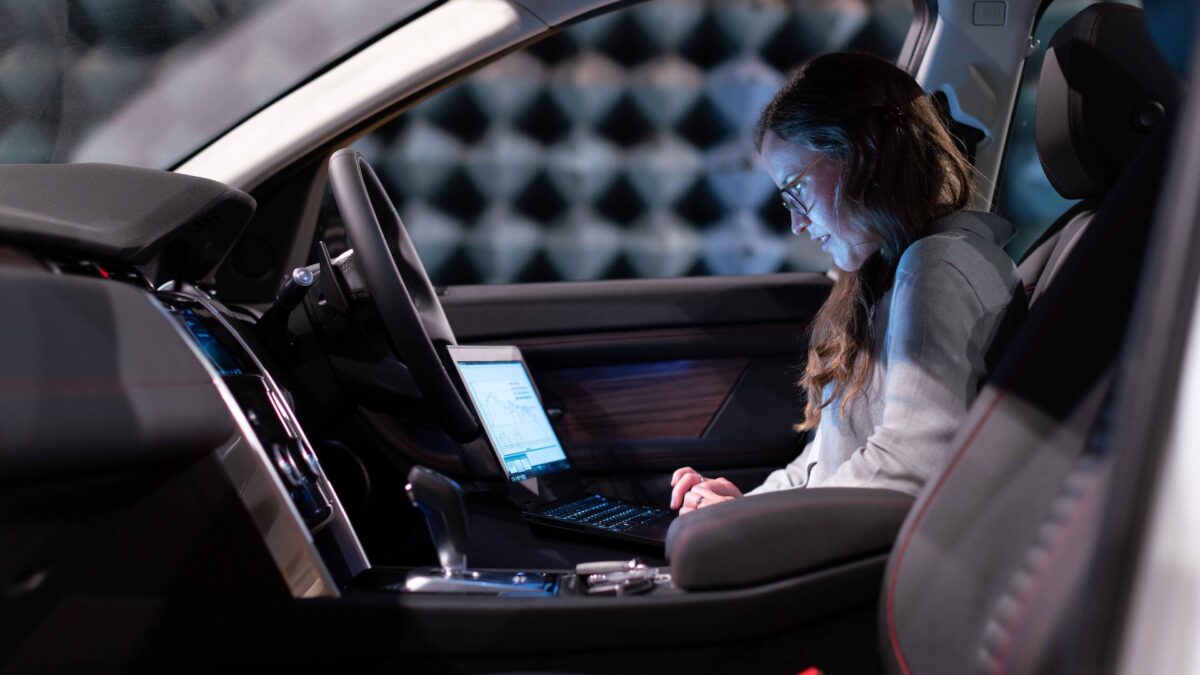
As technology has crept into everyday life and across all activities, it has transformed the mediums by which we receive information and the kinds of information we consume. While we know there has been a fundamental shift within every age group and demographic in the U.S., research is only just beginning to show us what those changes in consumption mean for the human brain.
To date, research results and best practices have been mixed. Whether the use of devices is good or bad for our brains, one thing is for certain: they are literally changing the way we think and develop.
Our Brains On Devices
The average adult consumes five times more information every day than the average adult did 50 years ago. Further, we spend as much as 12 hours a day in front of TVs and computers—and that’s just while we’re at home! Because of all this, how we interact with one another and the world around us is evolving, with research suggesting our time on social media shows measurable, causal differences in our mental health.
This certainly extends to teens, as they are becoming more and more consumed with devices in every aspect of their lives. Given that our brains can process about 120 bits per second, filters that help us choose which information of pay attention to (think about how you can drive hundreds of miles without remembering any of the scenery along the roads) now must work overtime to determine what is and is not important to our survival.
Sadly, shifts in what is “important” to developing minds also change how the brain filters information that affects our well-being. For example, teens are expressing higher rates of depression and loneliness the more time they spend on their phones, despite claims by 81 percent of teens that phones make them “feel” more connected.
But the biggest shocks in research are coming from analyses on young children, whose developing brains are connecting millions of neurons each second. When grandparents, parents, and older siblings obsess over screens and digital content, these environment and behavioral patterns are surely rubbing off.
In fact, newly released research suggests that the brains of infants and young children show significant differences between kids who use (or are exposed to) smartphones, tablets, or video games more than seven hours a day. That amount might seem extreme, but it’s still five hours less than the average adult in their life. The same study from the National Institutes of Health (NIH) found that even children who consume two hours of media a day have lower thinking and language scores on tests than peers who didn’t.
Because screen time appears to be addictive, parents need to set strong resolutions early about how they intend on using devices. That’s particularly because, just like any addictive substance, the NIH found that parents’ use of devices will become a vicious cycle for their children and their children.
Even without this new information, the American Academy of Pediatrics (AAP) felt the need to rewrite its most recent guidelines about screen time for children. The AAP recommendations suggest, “avoid digital media use, except video chatting, in children younger than 18 to 24 months,” and for the best toys, “go back to the basics.” For children between the ages of two and five, the AAP recommends limiting screen time to one hour per day, and to let them use less of their own devices while they interact with children of any age.
Children Need Relationships, Not Stuff
Even in poorer households, babies and very young children are consuming more digital technologies than ever before. In fact, the lowest-income children tend to consume the most screen media.
This is despite decades of data supporting the need for close, interpersonal contact in young people and many population-based studies continuously showing links between the amount of young children’s daily screen time with increased body-mass index (BMI), fewer minutes of sleep per night, and delays in cognition, language, and social-emotional development.
While apps and devices can teach problem-solving skills or basic literacy, numeracy, and association, neither academic nor medical communities strongly support children using devices. Thus, the NIH set out explore the positive and negative impacts that TVs, phones, computers, and tablets are having on the youngest members of society. They plan to publish the results as soon as possible throughout the decade, in hopes of altering individual behaviors, societal practices, and educational systems in real-time.
Interestingly, in higher-income elementary schools, screens are already getting banned from classrooms altogether, while poorer public schools are more frequently leaning on devices to help teach. Some affluent schools have even begun to institute “play-based” preschools, as a new trend to enhance cognitive development through free-play, imagination, and interaction. While this may seem like a no-brainer to many parents, the curriculum is garnering a lot of money for high-end preschools.
Large-Scale NIH Study In the Works
Consuming information from devices is creating new ways of thinking about childhood development and best practices for maturing minds. And the NIH has taken a large-scale interest in our future generation’s brain development. Specifically, scientists want to better understand what device time does to the physical structure of the brain, in addition to social-emotional, cognitive, and motor development in a young brain. To do this, NIH is undertaking a $300 million study at 21 locations across the United States.
As of now, the study aims to follow more than 11,000 kids (enrolled during 2018) over the next 10 years. Although primary data has begun to trickle out, much more data will be released in 2019. It’s certain to influence neuroscientists and developmental specialists’ investigations around the world. This study could also quickly affect how parents and educators interact with children.
Of the data that has been shared thus far, there are some fascinating initial conclusions. For example, in a recent interview with Anderson Cooper on “60 Minutes,” an investigator of the study explained that, “What we do know about babies playing with iPads is that they don’t transfer what they learn from the iPad to the real world, which is to say that if you give a child an app where they play with virtual Legos, virtual blocks, and stack them and the put real blocks in front of them, they start all over.”
This early finding is consistent with AAP reports from 2016 that contend beginning around 24 months of age children can learn words from live video-chatting, but have trouble transferring screen learning to the three-dimensional world. For ages two and above, there is sufficient evidence to suggest that screen time is permissible, but that multiple developmental and health concerns exist for young children who use devices for multiple hours per day.
Consequently, it is no small task for parents to set resolutions, not only for themselves, but for their children about technology usage throughout the day. That’s likely most important in the home, where every interaction with a trusted person can be an opportunity for learning and growth.









